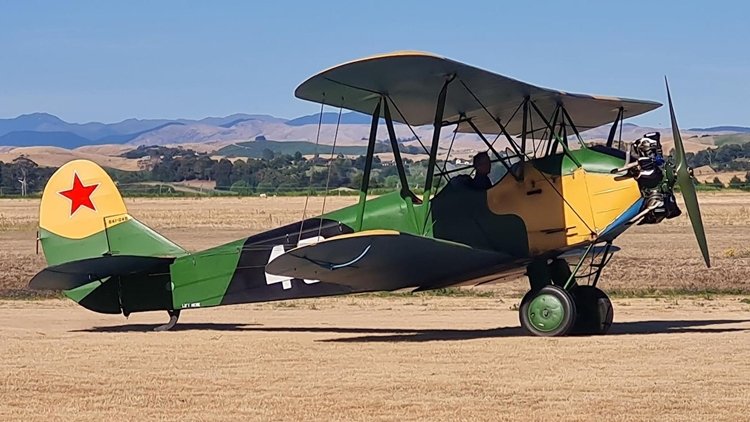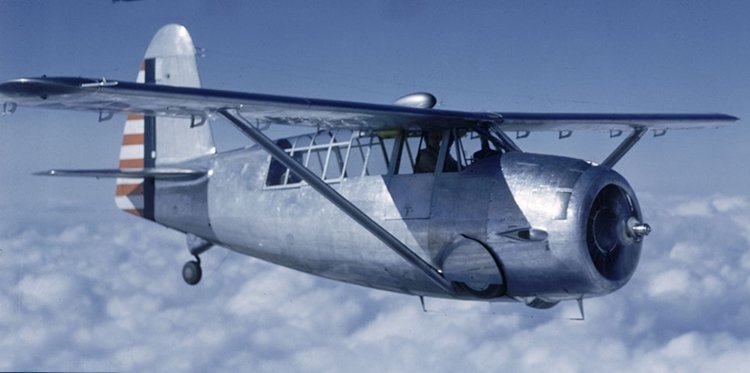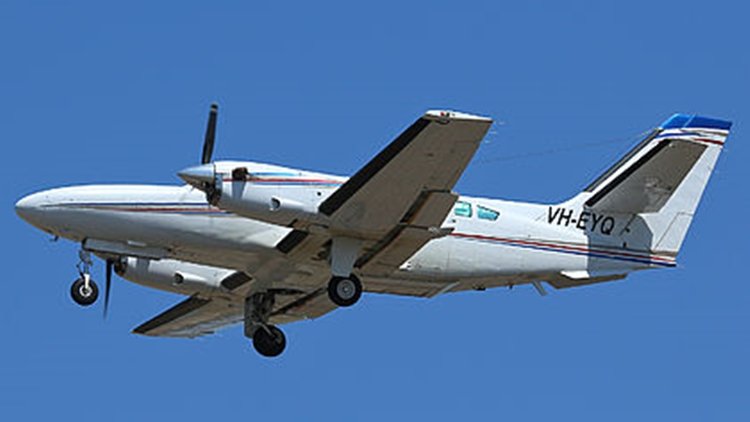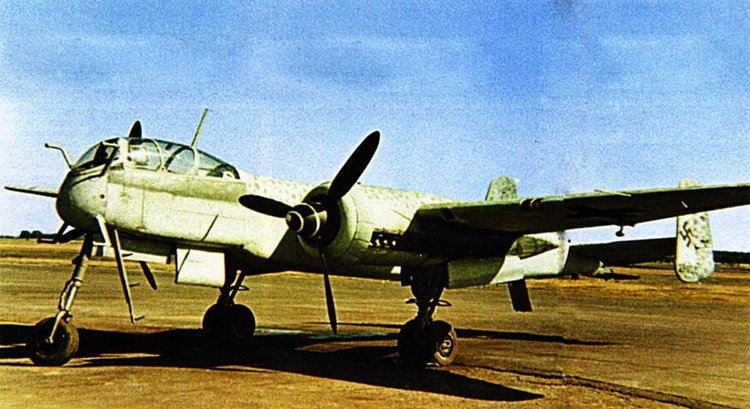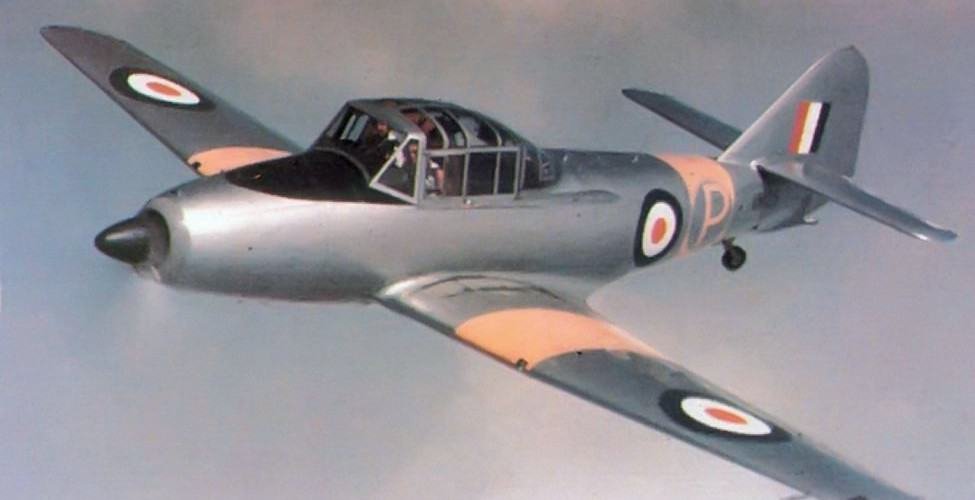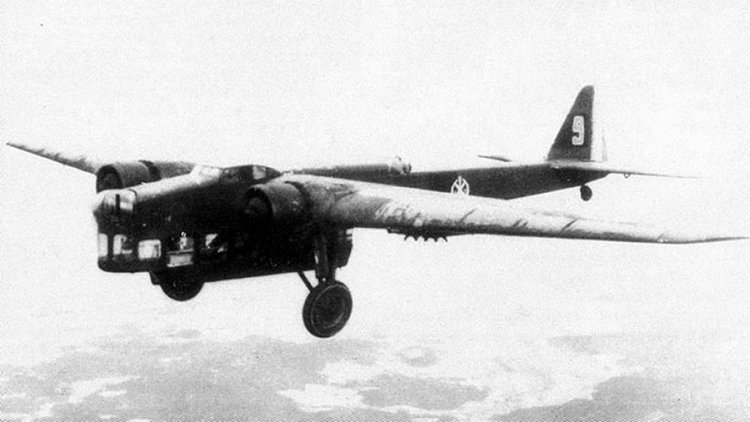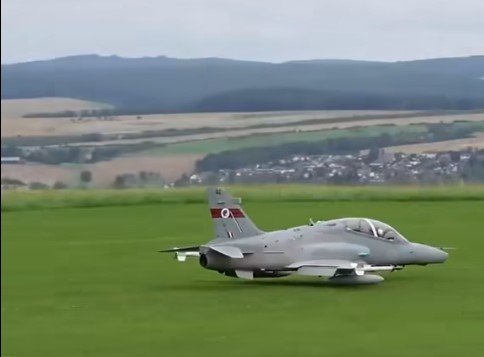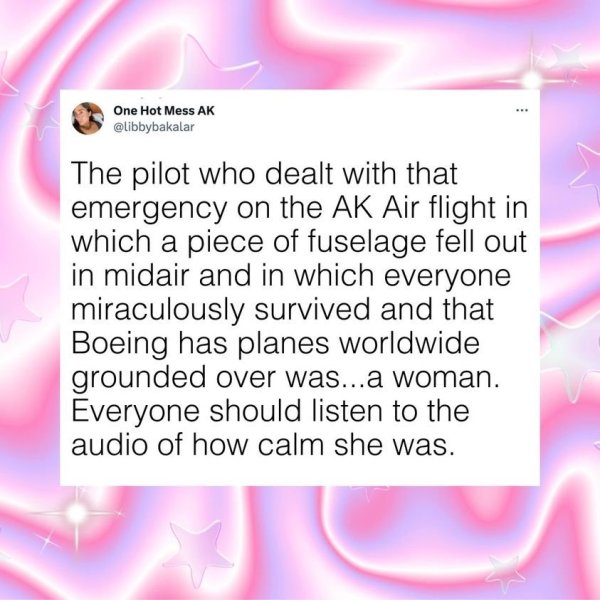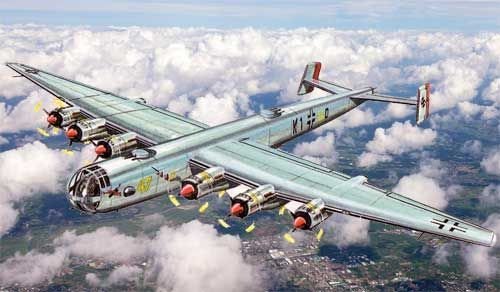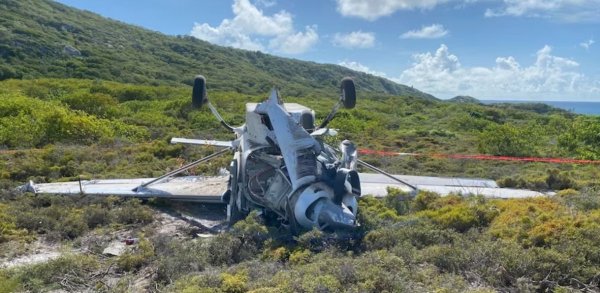-
Posts
7,574 -
Joined
-
Last visited
-
Days Won
67
Content Type
Profiles
Forums
Gallery
Downloads
Blogs
Events
Store
Aircraft
Resources
Tutorials
Articles
Classifieds
Movies
Books
Community Map
Quizzes
Videos Directory
Everything posted by red750
-

Crash at Boonah Golf Course 14/01/2024
red750 replied to HeliPilot70's topic in Aircraft Incidents and Accidents
Photo of a P92 on Facebook, with the comment "That looks like a Cessna 150 with an eating disorder!" -
The Polikarpov Po-2 (also U-2, for its initial uchebnyy, 'training', role as a flight instruction aircraft) served as an all-weather multirole Soviet biplane, nicknamed Kukuruznik (Russian: Кукурузник,[3][N 1] NATO reporting name "Mule"). The reliable, uncomplicated design of the Po-2 made it an ideal trainer aircraft, as well as doubling as a low-cost ground attack, aerial reconnaissance, psychological warfare and liaison aircraft during war, proving to be one of the most versatile light combat types to be built in the Soviet Union. As of 1978 it remained in production for a longer period of time than any other Soviet-era aircraft. Production figures for Polikarpov U-2 and Po-2 bombers and trainers combined are between 20,000 and 30,000 with production ending as early as 1952. Precise figures are hard to obtain since low-rate production by small repair shops and air clubs is believed to have continued until 1959. The aircraft was designed by Nikolai Polikarpov to replace the U-1 trainer (a copy of the British Avro 504), which was known as Avrushka to the Soviets. The prototype of the U-2, powered by a 74 kW (99 hp) Shvetsov M-11 air-cooled five-cylinder radial engine, first flew on 7 January 1928 piloted by M.M. Gromov. Aircraft from the preproduction series were tested at the end of 1928 and serial production started in 1929 in Factory number 23 in Leningrad. Its name was changed to Po-2 in 1944, after Polikarpov's death, according to the then-new Soviet naming system, usually using the first two letters of the designer's family name, or the Soviet government-established design bureau that created it. Production in the Soviet Union ended in 1953, but license-built CSS-13s were still produced in Poland until 1959. Only two examples made theeir way to Australia/New Zealand, both to New Zealand,one of which is shown in the photo above.This aircraft has been rebuilt from a wreck occurring in Russia. For operational history and a large number of variants, click here.
-
An early model P-51 Mustang with British RAF markings with an attached wooden wheel so it can easily be moved up and down ramps at North American Aviation, Inglewood California, 1942. If you look closely, on the wooden wheel someone has written 'Do not inflate'.
-
The Curtiss O-52 Owl was an observation aircraft used by the United States Army Air Corps before and during World War II. They were used for anti-submarine searches in Americas and by lend-lease also used on the Eastern Front in Europe by the Soviets. Developed in 1939, the Curtiss O-52 was the last "heavy" observation aircraft developed for the US Army Air Corps. The concept of the two-seat observation aircraft, classed as the "O" series aircraft, dated to World War I, and in 1940, the Army Air Corps ordered 203 Curtiss O-52s for observation duties. Curtis designed it the Curtiss Model 85, and it was powered by a Pratt & Whitney Wasp radial engine. Upon delivery, the aircraft was used in military maneuvers with the USAAC, but following America's entry into World War II, the USAAF determined that the aircraft did not possess sufficient performance for "modern" combat operations in overseas areas. As a result, the O-52 was relegated to courier duties within the U.S. and short-range submarine patrol over the Gulf of Mexico and Atlantic and Pacific Oceans. O-52 were used by the 2nd Reconnaissance Squadron, which flew them out of Puerto Rico and Trinidad, to search for Nazi U Boats. The O-52 was the last "O" type aircraft procured in quantity for the Air Corps. Following the attack on Pearl Harbor, the "O" designation was discontinued and the "L" series for liaison-type aircraft was adopted instead. In November 1942, the USSR ordered 30 O-52 Owls through the Lend-Lease program. Twenty-six were shipped, with only 19 delivered as a number were lost on the North Arctic Route. Of these only ten were accepted into service. They were used operationally for artillery fire spotting and general photographic and observation platforms in north and central areas on the Russian Front during spring–summer 1943. One O-52 was shot down by Luftwaffe fighters. In the report on military tests, the Soviet pilots recognized that the American machine was superior to the outdated Polikarpov R-5, and Polikarpov R-Z spotters used at the front. The aircraft was generally disliked in Soviet use although some were still flying into the 1950s.
-
The Reims-Cessna F406 Caravan II is a turboprop twin engine utility aircraft manufactured and designed by Reims Aviation in cooperation with Cessna. The F406 Caravan II is a twin turboprop engined, fourteen-seat low-wing monoplane of conventional aluminium and steel construction. It is a development of the Cessna 404 Titan with two Pratt & Whitney PT6A turboprop engines. The aircraft first flew on 22 September 1983, and was produced by Reims Aviation until the company's 2013 demise. The F406 is aimed at passenger and small cargo transport, and civilian and military surveillance. For extra cargo capacity, a cargo pod can be fitted to the belly of the aircraft. Though the F406 is more expensive to operate than single-engine aircraft of the same passenger capacity such as the Cessna 208 Caravan, having two engines makes it comply with European regulations regarding commercial operations, which only allow multi-engine aircraft for commercial instrument flight. In March 2014, Reims Aviation was acquired by Chinese-owned Continental Motors Inc and renamed ASI Aviation, two remaining incomplete airframes were finished in France before a shift to Mobile, Alabama, with new avionics, electrical and hydraulic systems, a new autopilot and an engine choice of current P&WC PT6A-135 or pistons : Continental GTSIO-520 and/or Continental CD-310 diesel. The Type Certificate transferred only had approval to produce spare parts and not the whole aircraft.
-
#BrendAn, which one is Oddball, Experimental, or One-off? Both were produced, and both went into service. Sure, Concorde was not MASS produced, but it doesn't fall into this category.
-
-
-

Crash at Boonah Golf Course 14/01/2024
red750 replied to HeliPilot70's topic in Aircraft Incidents and Accidents
If it is, it has been repainted. The black gryphon on the tail has been replaced by the Southern Cross. -
The Heinkel He 219 Uhu ("Eagle-Owl") is a night fighter that served with the German Luftwaffe in the later stages of World War II. A relatively sophisticated design, the He 219 possessed a variety of innovations, including Lichtenstein SN-2 advanced VHF-band intercept radar, also used on the Ju 88G and Bf 110G night fighters. It was also the first operational military aircraft to be equipped with ejection seats and the first operational German World War II-era aircraft with tricycle landing gear. Had the Uhu been available in quantity, it might have had a significant effect on the strategic night bombing offensive of the Royal Air Force; however, only 294 of all models were built by the end of the war and these saw only limited service. Ernst-Wilhelm Modrow was the leading night fighter ace on the He 219. Modrow was credited with 33 of his 34 night air victories on the type. Development and production of the He 219 was protracted and tortuous, due to political rivalries between Josef Kammhuber, commander of the German night fighter forces, Ernst Heinkel, the manufacturer and Erhard Milch, responsible for aircraft construction in the Reichsluftfahrtministerium (RLM – the German Aviation Ministry). The aircraft was also complicated and expensive to build; these factors further limited the number of aircraft produced. When engineer Robert Lusser returned to Heinkel from Messerschmitt, he began work on a new high-speed bomber project called P.1055. This was an advanced design with a pressurized cockpit, twin ejection seats (the first to be planned for use in any combat aircraft), tricycle landing gear – featuring a nose gear that rotated its main strut through 90° during retraction (quickly orienting the nosewheel into the required horizontal position for stowage within the nose, only at the very end of the retraction cycle) to fit flat within the forward fuselage, and remotely controlled, side-mounted FDSL 131 defensive gun turrets similar to those used by the Messerschmitt Me 210. Power was to be provided by two of the potentially troublesome, dual-crankcase DB 610 "power system" engines which had started their development in June 1940, weighing on the order of about 1–1⁄2 tonnes apiece, producing (2,950 PS/2,910 hp) each, delivering excellent performance with a top speed of approximately 750 km/h (470 mph) and a 4,000 km (2,500 mi) range with a 2,000 kg (4,410 lb) bomb load. The RLM rejected the design in August 1940 as too complex and risky. Lusser quickly offered four versions of the fighter with various wingspans and engine choices in order to balance performance and risk. At the same time, he offered the P.1056, a night fighter with four 20 mm cannon in the wings and fuselage. The RLM rejected all of these on the same grounds in 1941. Heinkel was furious and fired Lusser on the spot. For more details on the design, development, operational history and variants, click here.
-
The Avro 701 Athena is a British advanced trainer aircraft built by Avro in the late 1940s. It was designed to replace the North American Harvard in the Royal Air Force, but was bought only in small numbers, the competing Boulton Paul Balliol being preferred. 22 (including prototypes) were built. The Athena was designed to meet the requirements of Air Ministry Specification T.7/45 for a three-seat advanced trainer powered by a turboprop engine for the RAF. The Athena was an all-metal low-winged monoplane, with a side-by-side cockpit. The Air Ministry rethought its requirements in 1947 and replaced the original specification with Specification T.14/47, which specified the use of a Rolls-Royce Merlin 35 piston engine, large stocks of which were held in store. Despite the change in specification, the first three prototypes were of the turboprop-powered Athena T.1, the first of which, powered by an Armstrong Siddeley Mamba engine, flew on 12 June 1948 at Woodford Aerodrome. The Merlin-powered Athena T.2 first flew on 1 August 1948, and was evaluated against the similar Boulton Paul Balliol. A small production run of 15 Athenas was ordered for the RAF, but the Balliol was preferred, and no further Athenas were ordered. The 15 production Athenas were used by the RAF from 1950 for armament training at the RAF Flying College at RAF Manby. A single aircraft was loaned back to Avro and given the civil registration G-ALWA for a demonstration tour of India. No sales resulted and it was returned to the RAF. Variants Athena T.Mk.1 Turboprop-powered prototype. One 1,010 hp (750 kW) Armstrong Siddeley ASM.3 Mamba engine. Two built. Athena T.Mk.1A Single prototype powered by 1,400 hp (1,000 kW) Rolls-Royce RDa.1 Dart engine. Second prototype to fly. Athena T.Mk.2 Trainer to Spec. T.14/47 powered by 1,280 hp (950 kW) Rolls-Royce Merlin 35. Four prototypes plus 15 production.
-
The Amiot 143 (sometimes written as 143M or 143 M.5) was a 1930s French 5-seat Multiplace de Combat (M.5) designed to meet 1928 specifications for a monoplane capable of day and night bombing, long-range reconnaissance and bomber escort. Amiot received an order for two prototype Amiot 140s, to be evaluated against the competing Bleriot 137, Breguet 410 and SPCA 30. The Amiot 140 was a high-winged cantilever monoplane of all-metal construction, with a fixed tail wheel undercarriage. The pilot sat in an open cockpit, with positions for gunners in the nose and dorsal positions. A glazed gondola under the forward fuselage carried a bombardier/gunner, ensuring that the gunners had a clear field of fire all around the aircraft. The Amiot was intended to be powered by two 515 kW (691 hp) Lorraine 18G Orion water-cooled W engines but these were unavailable and the first prototype was fitted with Hispano-Suiza 12Nbr engines to allow flight testing, making its maiden flight on 12 April 1931. The second prototype was completed in February 1932 but the continued non-availability of its intended engines, either the original Lorraine-Dietrichs or turbocharged Hispano-Suizas, meant that it never flew. Despite this, on 23 November 1933 an order was placed for 40 Amiot 140s, to be powered by 662 kW (888 hp) Lorraine 12Q Eider engines. The French Air Ministry had meanwhile revised its requirements, concentrating on the bombing role and asking for better performance. Amiot redesigned the aircraft to meet these requirements and incorporate lessons learned during testing of the Amiot 140. The gondola under the fuselage was enlarged, allowing easier operation of the aircraft's guns and a radio-operator was added, bringing the crew to five. Manually operated gun turrets were provided in the nose and dorsal positions. Orders were placed for two prototypes, differing only in the engines fitted, with the Amiot 142 having Hispano-Suiza 12Y engines and the Amiot 143 having Gnome-Rhone 14K radial engines. The 143 flew first, on 1 August 1934, while the 142 didn't fly until January 1935. As it was decided to allocate the Hispano-Suiza engines to fighters, the Amiot 143 was selected, and the existing order for 40 Amiot 140s was converted to 143s. The Amiot 143 had the same high-wing and fixed undercarriage as the Amiot 140, with the wing thick enough to allow crew access to the engines by a tunnel between the wing spars. The pilot sat in an enclosed cockpit, level with the leading edge of the wing and the navigator-bombardier, who was also provided with flying controls, sat in the extensively glazed gondola beneath the pilot. The radio operator sat towards the rear of the gondola and in early aircraft operated two 7.7 mm (0.303 in) Lewis guns. Nose and dorsal turrets, each carrying a Lewis gun, completed the defensive armament, while the gondola also housed an internal bomb-bay. After 40 aircraft had been completed, the design was revised, with the aircraft being fitted with a longer nose (increasing overall length from 17.94 to 18.24 m (58.9 to 59.8 ft), a revised fuel system and with the Lewis guns in the nose, dorsal turrets and ventral position each being replaced by single 7.5 mm (0.295 in) MAC 1934 machine guns, with a fourth gun for the navigator-bombardier firing through a hatch in the floor. Deliveries of the design began in April 1935 and continued until March 1937, with a total of 138 being built. An improved version, the Amiot 144 was built to meet 1933 requirement for a Multiplace de Combat, fitted with a retractable undercarriage. First flying on 18 January 1936, only one was built. For details of operational history and variants, click here.
-
-
The Piper PA-48 Enforcer is an American turboprop-powered light close air support aircraft built by Piper in the 1970s. It is a development of the World War II-era North American P-51 Mustang fighter. The Enforcer concept was originally created and flown as the Cavalier Mustang by David Lindsay, owner of Cavalier Aircraft, in response to the United States Air Force PAVE COIN program, but Cavalier did not have the manufacturing abilities to mass-produce the Enforcer, so the program was sold to Piper by Lindsay in 1970. In 1971, Piper built two Enforcers by heavily modifying two existing Mustang airframes, fitting them with Lycoming YT55-L-9A turboprop engines along with numerous other significant modifications. One airframe was a single seat (called the PE-1 and FAA registered as N201PE), the other a dual-control aircraft (the PE-2, registered N202PE). Prior to the Pave COIN evaluation, N202PE was lost in a crash off the Florida coast on 12 July 1971 due to flutter caused by a Piper-modified elevator trim tab. Although the Enforcer performed well in the 1971–1972 Pave COIN test flown by USAF pilots, Piper failed to secure a USAF contract. In 1984, with a $US12 million appropriation from Congress, Piper built two new Enforcers, giving the new prototypes the designation PA-48. These aircraft were evaluated by the USAF, but flown only by Piper test pilots.
-
I've watched lots of videos of RC aircraft, and this video, which I can't get back or post, from which I saved this freeze frame, looked like a full size aircraft to me.
-
-
-
-
I see where they found some mobile phones which fell from the plane and they were still working.
-
The Focke-Wulf Ta 400 was a large six-engined heavy bomber design developed in Nazi Germany in 1943 by Focke-Wulf as a serious contender for the Amerikabomber project. One of the first aircraft to be developed from components from multiple countries, it was also one of the most advanced Focke-Wulf designs of World War II, though it never progressed beyond a wind tunnel model. Designed as a bomber and long-range reconnaissance plane by Kurt Tank, the Ta 400 had a shoulder-mounted wing with 4° dihedral. One of the most striking features were the six BMW 801D radial engines, to which two Jumo 004 jet engines were later added.
-



